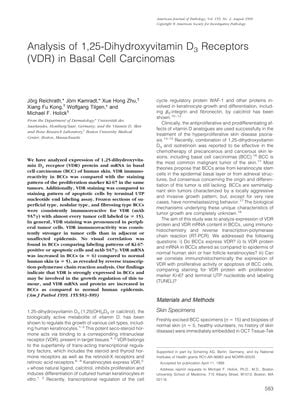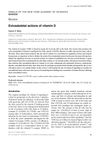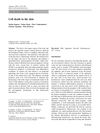Analysis of 1,25-Dihydroxyvitamin D3 Receptors in Basal Cell Carcinomas
August 1999
in “
The American journal of pathology
”

TLDR Basal cell carcinomas have much higher levels of Vitamin D3 receptors compared to healthy skin.
Twenty-four years ago, researchers conducted a study on 15 basal cell carcinomas (BCCs) and 5 healthy human skin samples to analyze the expression of 1,25-Dihydroxyvitamin D3 Receptors (VDR). They discovered that VDR was highly expressed in BCCs, with VDR mRNA levels being approximately 10 times higher in BCCs than in normal skin. The expression of VDR was particularly strong in the peripheral tumor cells and did not correlate with the proliferation marker Ki-67 or apoptotic cells, suggesting that VDR may play a role in the growth regulation of BCCs beyond just cellular proliferation. The study also noted that BCCs expressed RXR-α, which is necessary for VDR function, and referenced the potential effectiveness of combining 1,25-dihydroxyvitamin D3 with retinoids for treating skin lesions, including BCCs. However, the exact role of VDR in BCCs remained unclear, and further research was called for to understand the potential of vitamin D analogues and retinoids in chemoprevention of these tumors.

